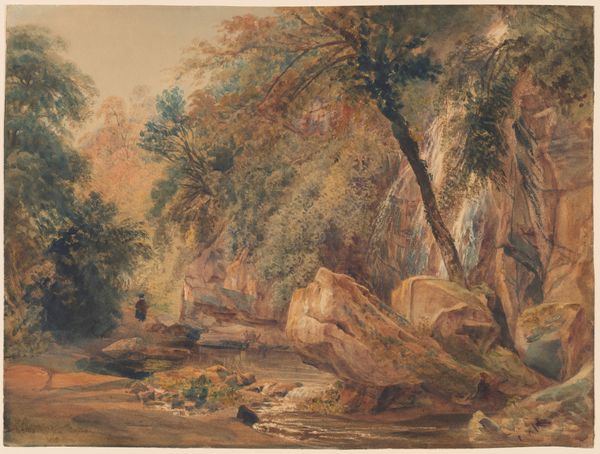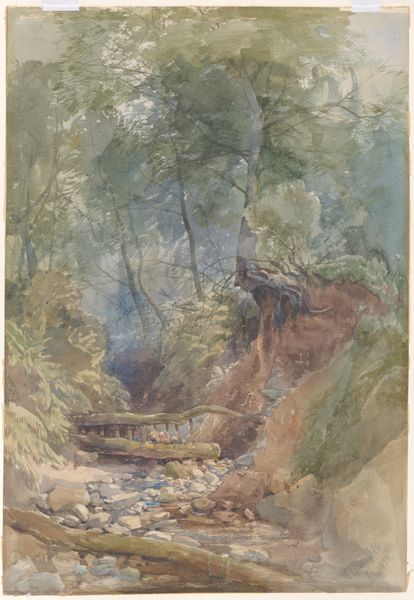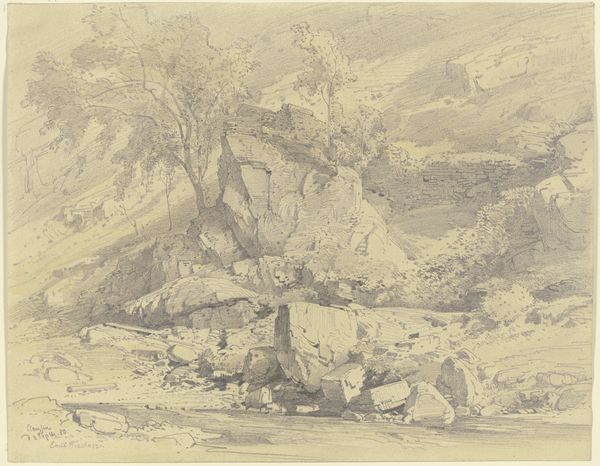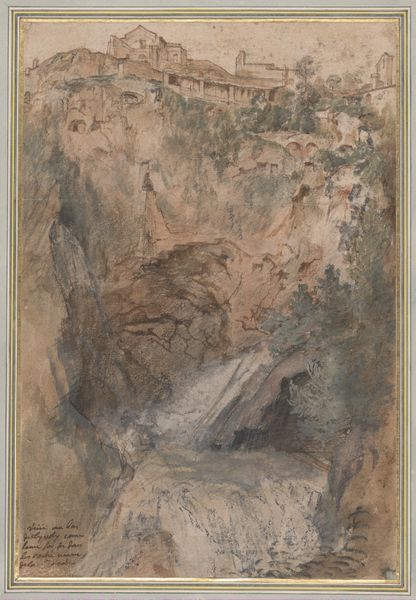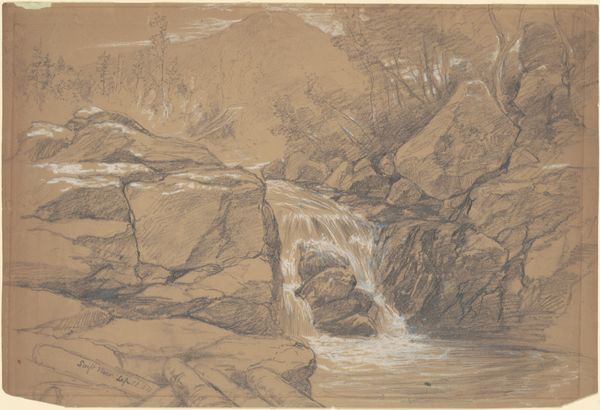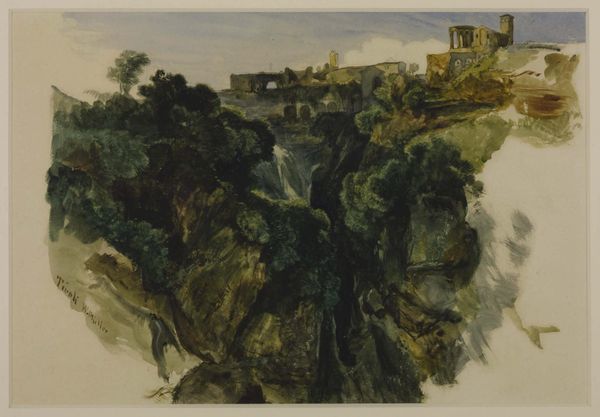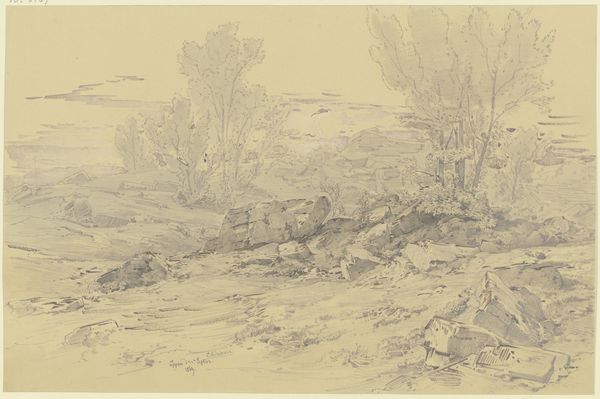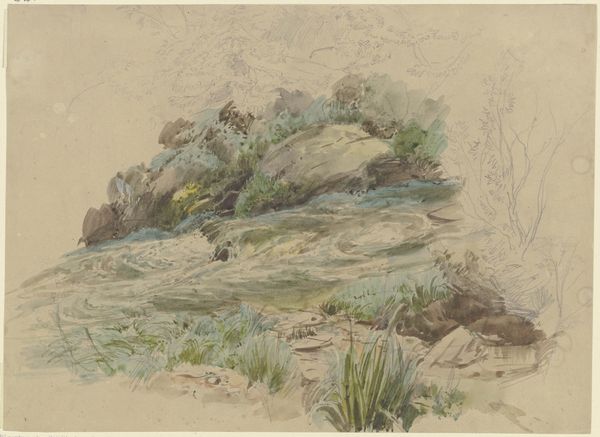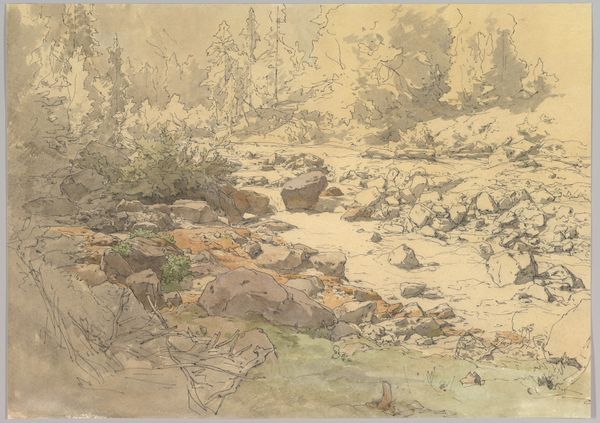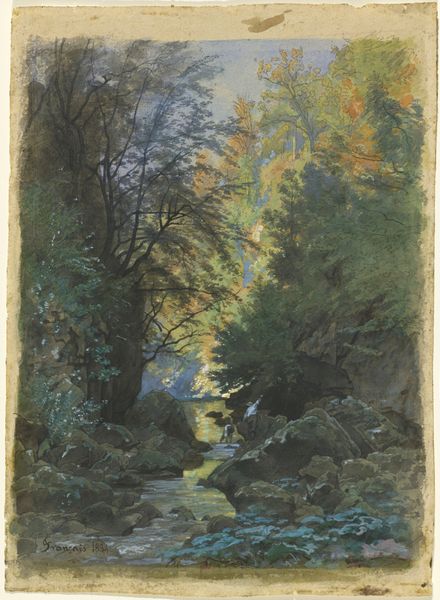
drawing, oil-paint, oil, watercolor
#
drawing
#
16_19th-century
#
austrian
#
oil-paint
#
oil
#
landscape
#
impressionist landscape
#
oil painting
#
watercolor
#
romanticism
#
watercolour illustration
#
watercolor
Copyright: Public Domain
Curator: Soothing, isn't it? The cascading water, the lush greenery. There's an almost melancholic peace. Editor: It has a Romantic sensibility. We’re looking at "Wasser-Reservoir in Tivoli," or "Water Reservoir in Tivoli," by Johann Nepomuk Rauch, painted around 1845. Rauch, an Austrian artist, captured this scene primarily using oil paint and watercolor, giving it this unique blended effect. Curator: Blended is the word. The scene feels idealized, divorced from any actual labor of maintaining the reservoir. The social implications of who has access to clean water, who manages it – that's all invisible. It's just pure, bucolic beauty. A real power fantasy, perhaps? Editor: Certainly. Considering Rauch was working within the Austrian Biedermeier period, we see a retreat from the political upheaval and a focus on domesticity, nature, and simpler pleasures. This imagery served to soothe a growing middle class seeking refuge from the industrial changes transforming their world. Were water reservoirs similarly loaded? Curator: Exactly! Clean water represents power, sanitation, and health. Tivoli, near Rome, with its ancient aqueducts, speaks to historical control. Painting it evokes those imperial legacies but strips them of contemporary socio-economic struggles, promoting a fiction of tranquil, shared benefit. I think about the history of the actual bodies who built this space. Editor: It's striking how the very technique amplifies this. The soft brushstrokes, the muted palette, it all contributes to this impression of placid timelessness. Consider, too, the intended audience—exhibited within salons or even reproduced as engravings—reaching further urban populations romanticizing their own relation to land ownership, environmental exploitation. Curator: Yes, the artistic choices themselves are arguments, silencing those uncomfortable questions of labor, access, and privilege that underpin such scenic leisure. It becomes this exclusive tableau that promotes erasure of complicated social dynamics. The naturalistic style here belies that social and structural fantasy at play. Editor: Indeed, that's given me so much to consider about the quiet politics operating in what appeared, at first glance, to be merely a pleasant landscape. Curator: And for me, to revisit how the tools of artistic expression, while undeniably skilled, subtly advocate certain worldviews and marginalize others.
Comments
No comments
Be the first to comment and join the conversation on the ultimate creative platform.
